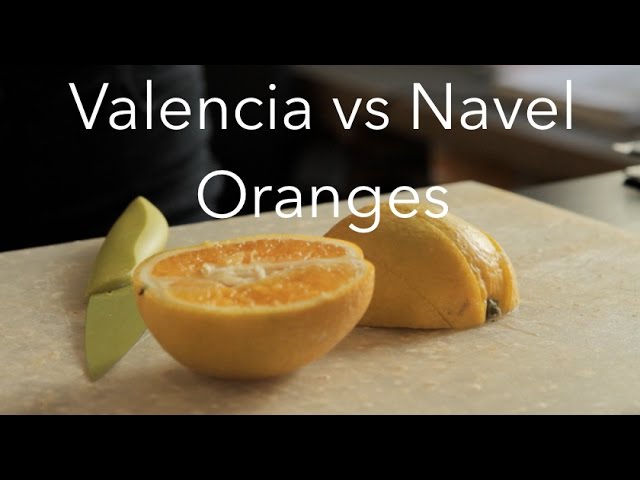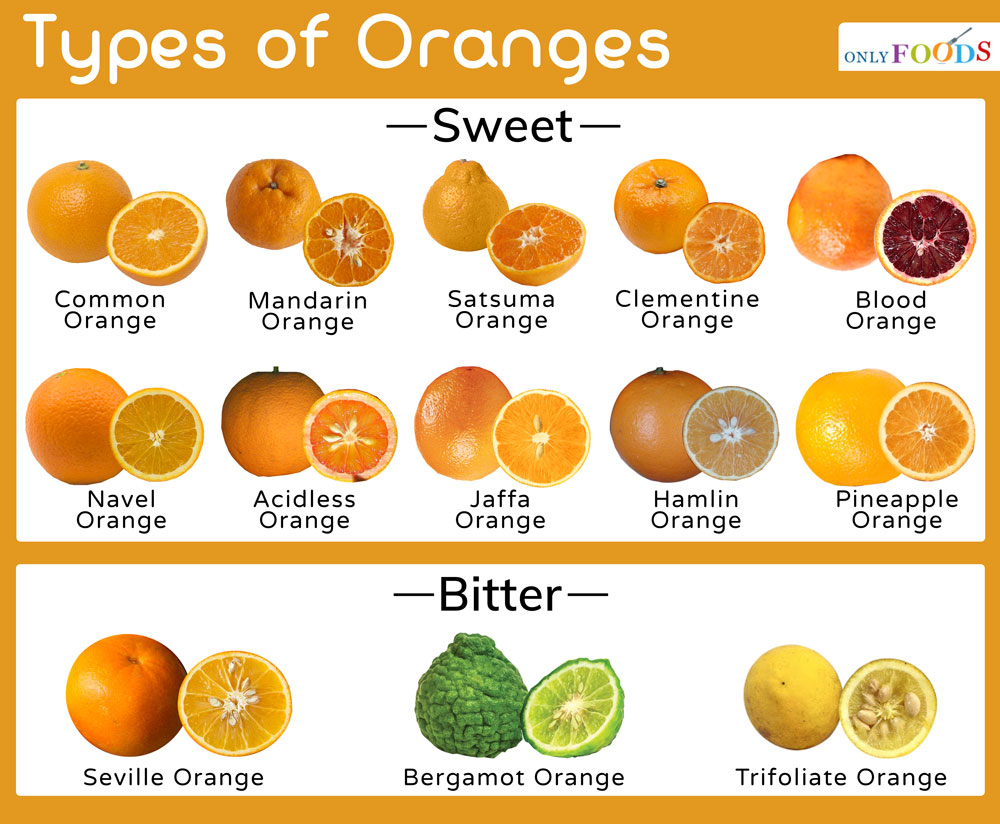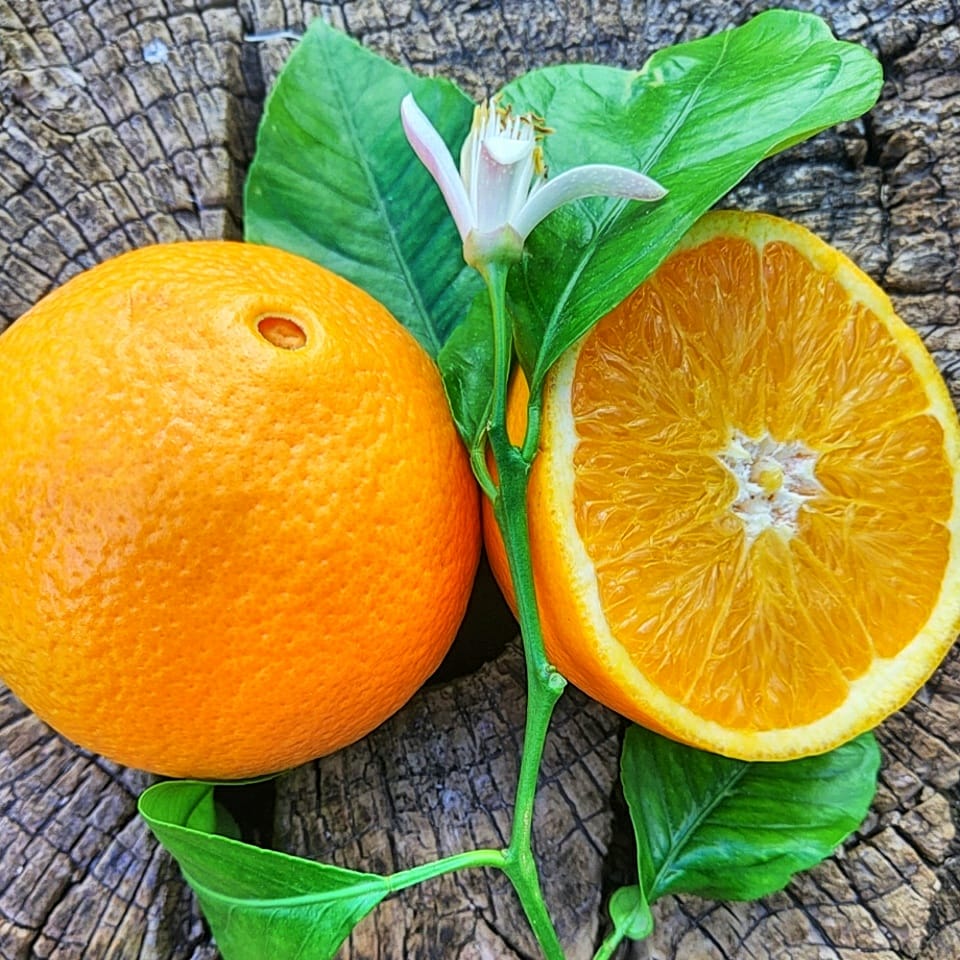Overview Of Valencia Oranges And Navel Oranges

Valencia Oranges and Navel Oranges are both popular varieties of citrus fruits known for their delicious flavor and vibrant color. Valencia oranges are small, tangy fruits that are typically harvested in the summer months. They have a thin, smooth skin and are known for their juicy, sweet-tart taste. On the other hand, Navel oranges are larger in size, with a characteristic “navel” at the blossom end. They have a sweeter taste and a slightly thicker skin, making them easier to peel. Both varieties are nutritious, full of vitamin C, and can be enjoyed fresh or used in various culinary applications.
Overview Of Valencia Oranges Characteristics And Taste
Valencia oranges are small, tangy fruits that are known for their distinctive characteristics. They have a thin, smooth skin that is easy to peel, revealing juicy, segmented flesh inside. The color of the Valencia oranges ranges from bright orange to golden yellow. When it comes to taste, Valencia oranges are a beautiful balance between sweet and tart. They have a refreshing, zesty flavor with hints of citrusy sweetness. The tanginess adds a delightful burst of flavor, making Valencia oranges a popular choice for juicing and eating fresh. Their vibrant flavor and juicy texture make them perfect for adding brightness to various recipes and beverages.
Overview Of Navel Oranges Appearance And Sweetness
Navel oranges stand out with their unique characteristics. They have a distinct “belly-button” or navel-like formation at the blossom end of the fruit, which sets them apart from other orange varieties. The skin of a Navel orange is thick and easy to peel, with a vibrant orange hue. In terms of taste, Navel oranges are known for their sweet flavor. Their flesh is juicy and tender, offering a delightful sweetness that is less tangy compared to Valencia oranges. The sweetness of Navel oranges makes them a popular choice for snacking and adding a burst of natural sweetness to various recipes and desserts.
Nutritional Value

Both Valencia oranges and Navel oranges offer a range of nutritional benefits. They are both rich in vitamin C, which is essential for a healthy immune system and collagen production. Valencia oranges also contain high levels of folate, a B-vitamin important for cell growth and development. Navel oranges, on the other hand, are packed with dietary fiber, which aids digestion and helps keep you feeling full. Both varieties are low in calories and fat, making them a nutritious and delicious addition to any diet.
Nutritional Comparison Between Valencia Oranges And Navel Oranges
Both Valencia oranges and Navel oranges offer a range of nutritional benefits. They are both rich in vitamin C, which is essential for a healthy immune system and collagen production. Valencia oranges also contain high levels of folate, a B-vitamin important for cell growth and development. Navel oranges, on the other hand, are packed with dietary fiber, which aids digestion and helps keep you feeling full. Both varieties are low in calories and fat, making them a nutritious and delicious addition to any diet.
Health Benefits Of Consuming Valencia Oranges And Navel Oranges
Both Valencia oranges and Navel oranges offer numerous health benefits. They are rich in vitamin C, which supports immune function and collagen production. Valencia oranges are high in folate, a B-vitamin important for cell growth and development. Navel oranges, on the other hand, are packed with dietary fiber, aiding digestion and promoting feelings of fullness. Both varieties are low in calories and fat, making them a nutritious choice. Incorporating Valencia oranges and Navel oranges into your diet can contribute to improved overall health and well-being.
Differences In Growing Conditions

Valencia oranges and Navel oranges have slight variations in their growing conditions. Valencia oranges thrive in warm, subtropical climates and require ample sunlight and well-drained soil. They can withstand high temperatures and are often grown in California and Florida. On the other hand, Navel oranges prefer cooler climates and are more sensitive to heat. They are commonly cultivated in Mediterranean regions, such as Spain and Italy. The difference in growing conditions can affect the flavor and quality of the oranges, as the climate and soil composition play a significant role in their development.
Variations In Growing Conditions For Valencia Oranges And Navel Oranges
Valencia oranges and Navel oranges have variations in their growing conditions. Valencia oranges thrive in warm, subtropical climates and require ample sunlight and well-drained soil. They can withstand high temperatures and are often grown in California and Florida. On the other hand, Navel oranges prefer cooler climates and are more sensitive to heat. They are commonly cultivated in Mediterranean regions, such as Spain and Italy. The difference in growing conditions can affect the flavor and quality of the oranges, as the climate and soil composition play a significant role in their development.
Impact Of Growing Conditions On The Flavor And Quality Of The Oranges
The growing conditions for Valencia oranges and Navel oranges have a significant impact on their flavor and quality. Valencia oranges thrive in warm, subtropical climates with ample sunshine, while Navel oranges prefer cooler Mediterranean regions. The climate and soil composition influence the development of sugars, acids, and other flavor compounds in the fruit. Differences in temperature and sunlight exposure can affect the sweetness, juiciness, and overall taste of the oranges. Additionally, the type of soil and its nutrient content can impact the size, texture, and quality of the fruit. Therefore, the growing conditions are crucial in ensuring the desired flavor and quality of both Valencia and Navel oranges.
Culinary Uses

Valencia Oranges and Navel Oranges offer unique culinary uses that showcase their individual flavors and characteristics. Valencia Oranges, with their perfect balance of sweetness and acidity, are highly sought after for juicing. Their vibrant, tangy juice adds a refreshing burst of flavor to beverages, dressings, and sauces. Navel Oranges, on the other hand, are primarily enjoyed fresh due to their seedless nature and easy-to-peel skin. Their sweet, slightly tart taste makes them perfect for snacking, adding to salads, or incorporating into desserts. Both varieties can elevate a wide range of culinary creations with their distinct, citrusy profiles.
Versatility In Culinary Applications Of Valencia Oranges And Navel Oranges
Valencia Oranges and Navel Oranges offer a wide range of culinary uses that showcase their unique flavors and characteristics. Valencia Oranges, with their perfect balance of sweetness and acidity, are highly sought after for juicing. Their vibrant, tangy juice adds a refreshing burst of flavor to beverages, dressings, and sauces. On the other hand, Navel Oranges are primarily enjoyed fresh due to their seedless nature and easy-to-peel skin. Their sweet, slightly tart taste makes them perfect for snacking, adding to salads, or incorporating into desserts. Both varieties can elevate a variety of culinary creations with their distinct, citrusy profiles.
Recipes And Dishes Featuring Valencia Oranges And Navel Oranges
Valencia Oranges and Navel Oranges are versatile citrus fruits that can be incorporated into a variety of recipes and dishes. Here are some delicious ideas to make the most out of these flavorsome fruits:
- Valencia Orange Salad: Combine Valencia orange segments with mixed greens, goat cheese, and candied walnuts for a refreshing salad.
- Navel Orange Glazed Chicken: Create a tangy glaze by combining Navel orange juice, honey, and soy sauce. Brush it on grilled or roasted chicken for a flavorful twist.
- Valencia Orange Sorbet: Blend Valencia orange juice with sugar and freeze for a refreshing and citrusy sorbet.
- Navel Orange Salsa: Mix Navel orange segments with diced red onion, jalapeño, cilantro, and lime juice for a vibrant salsa to serve with chips or grilled fish.
- Valencia Orange Tart: Make a buttery tart crust and fill it with a creamy Valencia orange custard for a decadent dessert.
Whether it’s in salads, entrees, desserts, or beverages, Valencia Oranges and Navel Oranges can enhance the flavor profiles of various dishes, adding a burst of citrus brightness. Enjoy exploring the different culinary possibilities!
Harvest Seasons

Valencia Oranges and Navel Oranges have different harvest seasons. Valencia Oranges are typically harvested from February to September, with the peak season occurring from March to June. On the other hand, Navel Oranges are harvested from November to April, with the peak season falling between December and March.
During these respective harvest seasons, the oranges are at their freshest and most flavorful. It is important to consider the harvest seasons when choosing between Valencia Oranges and Navel Oranges to ensure optimal taste and quality.
Harvest Seasons Of Valencia Oranges And Navel Oranges
Valencia Oranges and Navel Oranges have different harvest seasons. Valencia Oranges are typically harvested from February to September, with the peak season occurring from March to June. On the other hand, Navel Oranges are harvested from November to April, with the peak season falling between December and March. During these respective harvest seasons, the oranges are at their freshest and most flavorful. It is important to consider the harvest seasons when choosing between Valencia Oranges and Navel Oranges to ensure optimal taste and quality.
Availability And Freshness Of The Oranges During Different Times Of The Year
Valencia Oranges and Navel Oranges have different availability and freshness throughout the year. Valencia Oranges are typically harvested from February to September, with the peak season occurring from March to June. During this time, Valencia Oranges are at their freshest, juiciest, and exhibit their best flavor. Navel Oranges, on the other hand, are harvested from November to April, with the peak season falling between December and March. This ensures that Navel Oranges are at their peak freshness and sweetness during these months, providing consumers with the best tasting fruit. It is important to purchase oranges during their respective harvest seasons to ensure optimal taste and quality.
Conclusion

In conclusion, Valencia oranges and Navel oranges have distinct characteristics that make them suitable for different preferences and culinary applications. Valencia oranges are known for their juiciness and tangy flavor, making them ideal for juicing and cooking. On the other hand, Navel oranges are sweeter and easier to peel, making them a popular choice for snacking. When choosing between the two, it is important to consider factors such as taste, convenience, and availability. Ultimately, both varieties offer unique qualities that can enhance various dishes and provide a refreshing citrus experience.
Summary Of The Key Differences Between Valencia Oranges And Navel Oranges
Valencia Oranges and Navel Oranges have distinct differences that make them unique. Valencia Oranges are known for their tangy flavor and juicy flesh, making them perfect for juicing and cooking. They also have a thinner skin and more seeds. Navel Oranges, on the other hand, are sweeter and easier to peel due to their thick and easily separable peel. They are seedless and have a distinctive “navel” at the blossom end. These differences in taste, texture, and convenience make each variety suitable for different culinary uses and personal preferences.
Recommendations For Choosing Between The Two Citrus Varieties
When choosing between Valencia Oranges and Navel Oranges, it ultimately comes down to personal preference and intended use. Here are some recommendations to help you decide:
- If you prefer a tangy and tart flavor, opt for Valencia Oranges. They are perfect for juicing and cooking.
- If you prefer a sweeter, milder taste, go for Navel Oranges. They are great for snacking and adding to salads.
- Consider the convenience factor – if easy peeling and seedlessness are important to you, Navel Oranges are the way to go.
- Take into account the harvest seasons and availability – Valencia Oranges are typically available from spring to summer, while Navel Oranges are more readily available in winter.
- Experiment and try both varieties to find your personal favorite. Enjoy the unique flavors and deliciousness of these citrus fruits.
FAQ About Valencia Oranges Vs Navel Oranges: Comparing Citrus Varieties
Q: What is the main difference between Valencia Oranges and Navel Oranges?
A: The main difference lies in their harvesting seasons. Valencia Oranges are typically harvested in summer, while Navel Oranges are harvested in winter.
Q: How do Valencia Oranges and Navel Oranges differ in taste?
A: Valencia Oranges are usually sweeter and have a more tangy flavor compared to Navel Oranges, which are known for their mild and seedless characteristics.
Q: Which variety is better for juicing, Valencia Oranges or Navel Oranges?
A: Valencia Oranges are preferred for juicing due to their high juice content and tangy flavor, making them a popular choice for fresh orange juice.
Q: Do Valencia Oranges and Navel Oranges have different nutritional values?
A: Both oranges are rich in vitamin C and dietary fiber. However, Valencia Oranges tend to have slightly higher vitamin C content compared to Navel Oranges.
Q: Can Valencia Oranges and Navel Oranges be used interchangeably in recipes?
A: While they can be used interchangeably in most recipes, the flavor profile of each variety may slightly affect the overall taste of the dish. It’s recommended to use Valencia Oranges for recipes that require a sweeter or tangier taste.

We are introducing OH! NANA, where culinary excellence meets sustainability! Our journey began with a passion for creating delicious, nutrient-dense dishes while minimizing waste and environmental impact. At OH! NANA, we believe that great taste and nutritional value can go hand in hand with responsible sourcing and production. Our commitment to delivering intense flavors and high nutritional value is paired with a dedication to reducing waste in every aspect of our operations. From sourcing fresh, locally-grown ingredients to implementing efficient kitchen practices, we strive to positively impact both your health and the health of our planet.